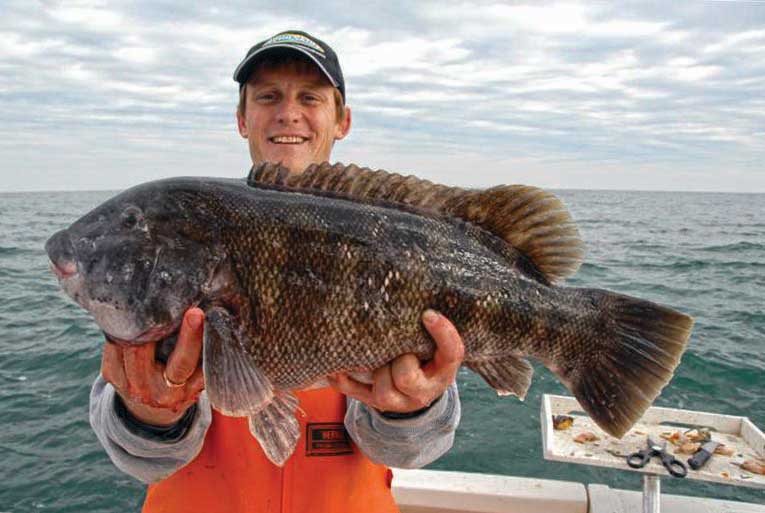No one likes to see winter come to DelMarVa, myself included, but come it will and with it snow, ice, and wind. If there is anything good about winter, other than Christmas, it is tog fishing. These tasty, tricky, hard-fighting fish can get me out on the water even in January and February because they are fun to catch, and by then the Eagles will be so far out of it, I can’t bear to watch them play.

Most boat owners will have their pride and joy put away for the winter and that’s a good thing. Going out on the ocean when the water temperature is in the low 40s or upper 30s is not something do to on small boats. Hypothermia can come to you without you getting wet. And if the wind should kick up, as it is wont to do, the spray alone is enough to put you in serious trouble.
Tog fishing is best done from a charter boat. The captains who stick around Ocean City, Virginia Beach, and Indian River Inlet know where the tog are likely to be and can put you on the fish. Then all you have to do is catch them.
I use a single hook bottom rig because I lose a lot of rigs in the rubble tog call home. I tie it up with an 18-inch length of 30-pound Fluorocarbon leader. I put a perfection loop in one end and a double surgeon’s loop in the other. Between the two I will tie another double surgeon’s loop to hold the hook. The hook will be a Virginia-style model.
I will attach the hook either by sliding a snelled version on with a loop-to-loop knot or I will pass the surgeon’s loop on the leader through the loop on the end of the hook, bring the hook back through the leader, and secure it that way. I prefer the second way because it keeps the hook close to the leader where it can’t get into trouble and where there is such a short leader that you can feel the fish as soon as it nibbles on the bait.
Years ago, while visiting the Virginia Marine Aquarium in Virginia Beach, I happened to be there at feeding time. Watching how tog feed was an education. They take their food, some sort of shellfish, into their mouth, crush the shell, spit it out, keep the meat, and swallow it. All of that takes about one nanosecond. No wonder they are so hard to hook! That is also why circle hooks don’t work on tog.
I have seen a double-hook rig where both hooks drop together side-by-side. Each hook is then put into either side of a green crab or shrimp. I have not tried this setup, but it should work.
If you want to see some strange behavior, go onboard a head boat when the target species is tog. Some guys will be standing with their rods pointed to the water looking like ballet dancers caught in mid jump. Their rod tips pointed towards the water, while they stand on their tip toes looking at the sea as if they expected the fish to give them a sign. Granted, concentration is important when fishing for tog, but you don’t have to go quite that far.
I use a half of a green crab hooked in the middle and keep my line tight as the sinker sits on the bottom. My line will be as close to 90 degrees to the water as possible. Never let the sinker drift away from the boat. If it does, you will need a new rig because that one just got tangled in the structure. This time, use a bigger sinker.
Because of the terrain you will be fishing over and the current you may encounter, weights as high as eight to 10 ounces may be necessary. Because of this, rods must be able to handle the weight without collapsing. In today’s world that doesn’t mean you have to use a broomstick. I have a Tsunami Classic 761H with a Tsunami HYBRID reel and 40-pound Stren line. A shock leader of 40-pound Fluorocarbon leader is also used.
I pick up and drop my rig just an inch or two to keep tabs on what’s going on down there. If I feel even the slightest weight, I set the hook. Do I set the hook on nothing? Sure. Do I set the hook on a tog? You bet.
Also, by lifting and dropping my rig I can tell what type of bottom I am on. I use braided line on a conventional reel, and the line is so sensitive I can feel the difference between mud, steel, and rocks.
Eric Burnley